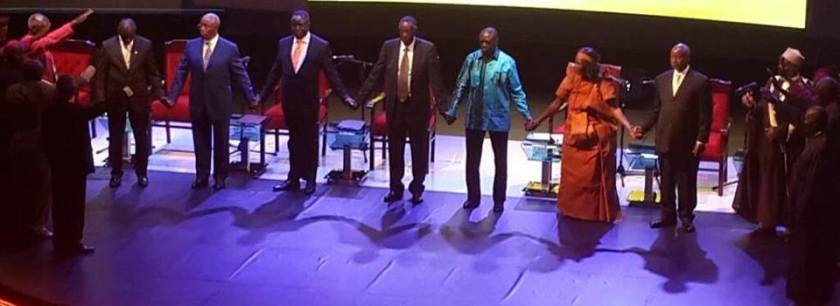Here I will Travers through the report of Auditor General of Uganda’s Annual Report for the year ended 30th June 2015. This is on: “CENTRAL GOVERNMENT AND STATUTORY CORPORATIONS”. I will take the quotes and stories that seem to show parts of how the Government of Uganda works and what the Auditor General have cared about addressing in this specific report. Take a look! This here is Part two!

Ministry of Works and Transport Sector:
Certain information from the ministry:
“management used the services of a local company to print Ministry materials at a cost of UGX.48,000,000 without following procurement guidelines” (…)”expenditure totalling to UGX.157,861,512 was inappropriately charged on budget lines to fund activities that were not planned for without authority” (…)”management explained that this was caused by UGX3,367,986,442 that was held on the Stanbic Bank Collection account as the funds were earmarked to replace worn out equipment and plant and MELTC, yet management does not spend these funds at source; and UGX.819,209,847 mainly consisted of funds earmarked or Lake Bisina Ferry landing sites and DRRU. MELTC will be required to return all the unspent operational funds when the Rural Transport Infrastructure (RTI)/U-growth project ends on 30th June 2016” (P:116 – 121). Comment: This here prove how the have chared funds without authority. The Ministry also has to release funds back to the RTI U as they have not done their work on the Ferry Landing Site.

Non-payment of UGX.490m to Mukono District Council:
“Management explained that the long standing dispute between the Ministry and Mukono District affected the progress of the ICD project and an understanding had been reached between the two parties. However in December 2014, the Ministry sought legal advice from the Solicitor General on the pending compensation of UGX.490m to Mukono District and the Solicitor General advised that there was no justification for the compensation since the District could not prove that it owned the structures” (P: 132). Comment: This here proves mismanagement for Local Government Council and the Ministry, that the monies does not leave either party or to the party that deserve the money. Not well played by either ones.
Construction of Nwoya Community Justice House – Abandoned construction works:
“Nwoya Community Justice Centre was constructed by a local company at UGX.1,516,916,000. The contract commenced on 11th July 2014. Audit inspection carried out at the site on 19th September, 2015 revealed that the contractor abandoned the work. There was no construction work in progress” (P: 158). Comment: Here is mismanagement locally and also with the ministry therefore it is a building without a contractor who left the premises. The OAG and the Ministry should probe the contractors and also the Local Government Council for the little check on the work in their district. Or doesn’t it matter that the work and used monies on a court building left unfinished?

Directorate of Citizenship and Immigration Control (DCIC):
Construction of Border Posts:
“Construct Sebagolo model border post with staff quarters), Kikagati mini border post and Ishasha mini border post” (…)”Was allocated UGX 200m and none used funds or absorbed” (…)”Sebagolo; procurement abandoned. No land title” (…)”Ishasha; procurement abandoned due to lack of structural drawings, border post building design and BoQs” (…)”Kikagati; procurement; abandoned due to lack proof of ownership of land” (P: 161).
Ministry of Affairs:
DGAL-Gulu – Delayed completion of the construction of a Regional Laboratory in Gulu:
“The construction of the Regional Laboratory started on 28th January 2008 at a contract sum UGX.436,445,468 and was to be completed by 28th July, 2008 (after 22 calendar weeks)” (…)”at the time of writing this report, the construction had not been completed (after 7 years) and the site appears to have been abandoned. A total of UGX.236,330,768 (54,15%) was paid to the contractor and the building had been roofed, plastered and fitted with exterior doors and window burglars” (P: 177). Commented: They proved too been a breach of contract between the Ministry, Local Government Council and the contractors who was building on the site. These institutions should probe the contractor for delays and not finishing the building, while the government should check the history of the allocations and see why they haven’t done the work and delivered as budgeted in the past.

Uganda Police Force:
Non-working vehicles:
“The Force had 291 and 970 uneconomical and grounded motor vehicles and motorcycles representing 27% and 28% respectively of the available fleet of 1091 motor vehicles and 3452 motor cycles” (P: 183). Comment: That such a giant part of their fleet is standing still and can’t be used for their entitled work. So it is a waste of funds and also equipment.
Land Titles:
“The budget of UGX.120m was again provided for the financial year 2014/2015, however, this was not enough to carry out the activity. This financial year (2014/15), UGX.3.7bn had been estimated to cover the surveying, titling, boundary opening, land purchase, land planning and design, compensation and inspection, however only UGX.120m was provided in the budget” (P: 185). Comment: This here prove how little the state care for police when they can’t secure funding for land in and titles for the Police Stations. Another proof of weak governance when they doesn’t care for their own civil servants.

Police Boats:
“Police has over 40 vessels including long distance patrol boats, firefighting boats, fiber glass boats and inflatable boats deployed in the detach units on all major water bodies of Lakes Victoria, Kyoga, Albert, Edward and George. However, the Force lacks a marina at Kigo marine headquarters for safe docking and parking of major boats. As a result, some big boats are docked/parked at Lake Victoria Serena Hotel for safety purposes, while others are dry docked (parked on land) at Kigo headquarters” (P: 186). Comment: We can see that the Police don’t have funding for the boats and to keep the upkeep of them. That proves that the Government doesn’t value the boats, since they don’t keep them in great areas.
Police Mariners staff, Post Mariners Post-Education and Fuel issues:
“Marines unit has a workforce of 197 staff with over 40 vessels. A review of the unit nominal roll revealed that only 10 staff have mechanical/technical related qualifications while 6 have qualifications in fisheries” (…)”The Accounting Officer further explained that some training is already underway both within and outside the country, and that in the current financial year, 45 staff are undergoing marine training by Korean instructors” (…)”The unit detaches are provided with 200 liters of fuel for operations per month (6.4 liters per day) and yet the fiber boats at each unit consume 20 liters per hour. According to the in-charge, each unit detach requires at least 60 liters a day which puts the fuel requirement per month to 1,800 liters for the units to effectively monitor the waters” (P: 188-191). Comment: That there are 40 vessels and only 6 have seamen education. 10 mechanical people who can fix the technical problems with the boats that the police have. Yet again, the training has to happen by donors or foreign because the government can’t be able to finance their own personnel training. That should be worrying. The last issues that the boats can be used as much they can because of the use of 20 liter per hour. They miss the 1600 liters they need to function, because they are only allocated 200 liters. Show’s a mismatch of the use of funds for this part of the UPF.
Uganda Prison Service:
Congestion:
“By June 2015, the population of prisoners stood at 45,092, exceeding the available capacity by 28,575 inmates (occupancy level is 273%). Some prisons are overcrowded, housing up to 3 times their designed holding capacities” (P: 197). Comment: The government might not be expected to deliver at hotel to the inmates in prison. But to congestion them like cattle or having housing for them that creates diseases and poor hygiene; shows that the punished people in prisons get not only time to serve as convicts, but also get conditions that makes their stay a health hazard.
Funds of Consolidated Funds:
“UGX.2,808,413,252 was reported in the statement of financial position as cash and cash equivalent at the end of the financial year. The unspent funds should have been transferred to the consolidated fund by close of the year however, UPS did not remit the funds to the condolidated fund” (P: 195). Comment: This here proves that this government outfit doesn’t have the properly functioning accounting practices since they don’t follow the laws for unused allocated funds.
Reference:
Office of the Auditor General – The Annual Report for the Year Ended 30th June 2015 – Central Government and Statutory Corporations 30th June 2015.








